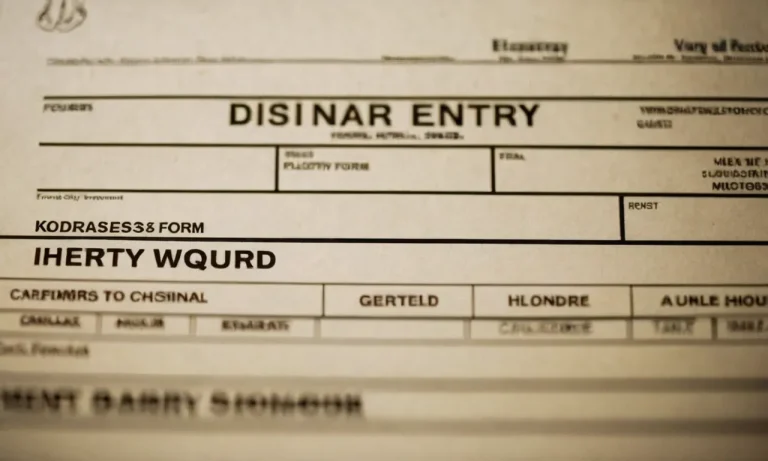How Deep Is The San Antonio Riverwalk?
The scenic San Antonio Riverwalk attracts over 15 million visitors each year who enjoy strolling along the walkways next to the winding San Antonio River. If you’ve wondered what lies beneath the water’s surface and how deep the river is at the Riverwalk, read on for a deep dive into the depths.
If you don’t have time for all the details, here’s the quick answer: The average depth of the San Antonio River along the main sections of the Riverwalk is between 5 to 8 feet.
History and Construction of the San Antonio Riverwalk
The San Antonio Riverwalk is a world-renowned attraction that draws millions of visitors each year. But have you ever wondered about the history and construction of this iconic landmark? Let’s dive into the fascinating story behind the creation of the San Antonio Riverwalk.
Original River Channel Depth
The San Antonio River, upon which the Riverwalk is built, has a rich history that dates back centuries. Originally, the river was quite shallow, with a depth of only a few feet in some areas. This limited its navigability and hindered its potential for development.
However, in the early 20th century, city leaders recognized the untapped potential of the river and embarked on a project to deepen and widen its channel. By dredging the riverbed and constructing retaining walls, they were able to create a more navigable waterway and lay the groundwork for what would become the San Antonio Riverwalk.
River Improvements Over Time
Over the years, the San Antonio Riverwalk has undergone several improvements to enhance its beauty and functionality. One significant enhancement was the addition of stone pathways and bridges, which not only provided easier access for pedestrians but also added to the overall charm of the area.
In the 1960s, a major expansion project was undertaken to extend the Riverwalk to the north and south, increasing its length and connecting it to other parts of downtown San Antonio. This expansion allowed for more dining, shopping, and entertainment options, making the Riverwalk a truly vibrant and bustling destination.
Today, the San Antonio Riverwalk spans approximately 15 miles, winding its way through the heart of downtown. It features a network of canals, walkways, and lush landscaping, creating a tranquil oasis in the midst of the city.
If you’re interested in learning more about the San Antonio Riverwalk and its history, be sure to visit https://www.thesanantonioriverwalk.com, the official website of the Riverwalk, where you can find more information, upcoming events, and helpful tips for planning your visit.
Depth by Riverwalk Section
The San Antonio Riverwalk is a beloved tourist attraction located in downtown San Antonio, Texas. Spanning over 15 miles, the Riverwalk offers a scenic and vibrant experience for visitors and locals alike.
But have you ever wondered how deep the San Antonio River is in different sections of the Riverwalk? Let’s explore the depth by Riverwalk section.
The Downtown Reach
The Downtown Reach is the heart of the San Antonio Riverwalk, stretching from the iconic Alamo to the bustling Rivercenter Mall. In this section, the river has an average depth of around 10 feet. The depth can vary slightly depending on factors such as rainfall and water flow.
Although 10 feet may not seem very deep, it is enough to accommodate the riverboats and barges that glide along the water, providing a unique way to experience the Riverwalk.
The Museum Reach
The Museum Reach section of the Riverwalk extends north of downtown and is known for its art installations, museums, and beautiful landscaping. In this section, the average depth of the river is slightly shallower than the Downtown Reach, ranging from 6 to 8 feet deep.
This depth still allows for navigation by small watercraft and adds to the charm and tranquility of the area.
The Mission Reach
The Mission Reach is the southernmost section of the Riverwalk and offers a more natural and peaceful setting. This stretch of the river runs from downtown to the historic missions, including the famous San Antonio Missions National Historical Park.
The depth of the river in the Mission Reach section is similar to the Museum Reach, with an average depth of around 6 to 8 feet. This depth provides a serene backdrop for kayaking, paddleboarding, and other recreational activities.
It’s important to note that these depth measurements are approximate and can fluctuate due to factors such as rainfall and maintenance activities. If you’re planning to visit the San Antonio Riverwalk and want to explore the river, it’s always a good idea to check with local authorities or tour operators for the most up-to-date information.
For more information about the San Antonio Riverwalk and its various sections, you can visit the official website of the San Antonio River Authority at https://www.sara-tx.org/.
Measuring and Maintaining River Depth
One of the key factors in ensuring the smooth operation and functionality of the San Antonio Riverwalk is maintaining a consistent and adequate river depth. Measuring and maintaining the depth of the river is crucial for a variety of reasons, including navigation, flood prevention, and the overall aesthetic appeal of the area.
Depth Markers Along the Riverwalk
To assist in measuring the depth of the San Antonio River, depth markers are strategically placed along the Riverwalk. These markers provide valuable information to boat operators, river tour guides, and maintenance crews.
They help determine if the river is at a safe depth for navigation or if any dredging is required to remove sediment buildup.
These depth markers typically consist of vertical poles with numerical markings indicating the depth in feet or meters. They are color-coded to indicate safe navigation depths. For example, green may indicate a safe depth for small boats, while red may indicate a shallow area that requires caution.
By regularly monitoring these depth markers, officials can ensure that the river remains at an optimal depth for various activities along the Riverwalk. This helps to prevent accidents and maintain a smooth and enjoyable experience for both residents and visitors.
Periodic Dredging to Remove Sediment
Despite efforts to maintain a consistent river depth, sediment buildup can occur over time. Sediment, such as sand, silt, and debris, can accumulate in the riverbed, causing the water level to decrease and impeding navigation.
To address this issue, periodic dredging is carried out to remove the excess sediment.
Dredging involves the excavation and removal of sediment from the riverbed. This process helps to restore the river’s depth, improve water flow, and prevent flooding during heavy rainfall. It also helps to maintain the aesthetic appeal of the Riverwalk by keeping the water clear and free from debris.
During the dredging process, specialized equipment is used to remove the sediment and transport it to a designated disposal site. The frequency of dredging depends on various factors, including the rate of sediment accumulation and the overall condition of the river.
Efficient maintenance of the river depth through regular dredging ensures that the San Antonio Riverwalk remains a popular and vibrant destination for locals and tourists alike. It allows for the smooth operation of riverboats, kayaks, and other water-based activities, contributing to the overall charm and allure of this iconic urban waterway.
Future Plans to Modify River Depth
The San Antonio Riverwalk is a popular attraction in Texas, drawing millions of visitors each year. As the city continues to grow and evolve, there are ongoing discussions and plans to modify the depth of the river to enhance the overall experience for locals and tourists alike.
Proposed River Improvements and Expansions
One of the key aspects of future plans for the San Antonio Riverwalk is to deepen the river in certain areas. This will not only allow for larger boats and watercraft to navigate through the river, but also provide opportunities for additional recreational activities.
By deepening the river, it will create more space for kayaking, paddleboarding, and other water-based sports, making the Riverwalk an even more versatile destination.
Furthermore, the proposed river improvements and expansions aim to enhance the aesthetic appeal of the Riverwalk. By deepening the river, it will create a more visually striking experience as visitors walk along the banks.
The deeper water will reflect the surrounding buildings and vegetation, adding to the overall beauty and charm of the area.
It’s important to note that any modifications to the San Antonio Riverwalk will be done in a way that preserves its historical and cultural significance. While the river depth may be adjusted, the unique character and atmosphere of the Riverwalk will remain intact.
Ongoing Flood Control Efforts
In addition to future plans to modify the river depth, ongoing flood control efforts are also a top priority for the San Antonio Riverwalk. The city has experienced severe flooding in the past, and measures are being taken to prevent future incidents and ensure the safety of residents and visitors.
The San Antonio River Authority (SARA) is actively involved in flood control efforts along the Riverwalk. They have implemented various strategies to manage and divert excess water during heavy rainfall, including the construction of flood control tunnels and the maintenance of a comprehensive flood warning system.
By addressing flood control, the city can better protect the Riverwalk and surrounding areas from potential damage, ensuring that it remains a safe and enjoyable destination for years to come.
For more information on the San Antonio Riverwalk and its future plans, you can visit the official website of the San Antonio River Authority at https://www.sariverauthority.org/.
Conclusion
The river that flows through the vibrant San Antonio Riverwalk averages between 5 and 8 feet deep along the most heavily trafficked sections. The depth does vary in places due to the natural river bottom and past construction.
Careful maintenance and future improvement plans aim to provide a consistent and safe depth for visitors to enjoy.








